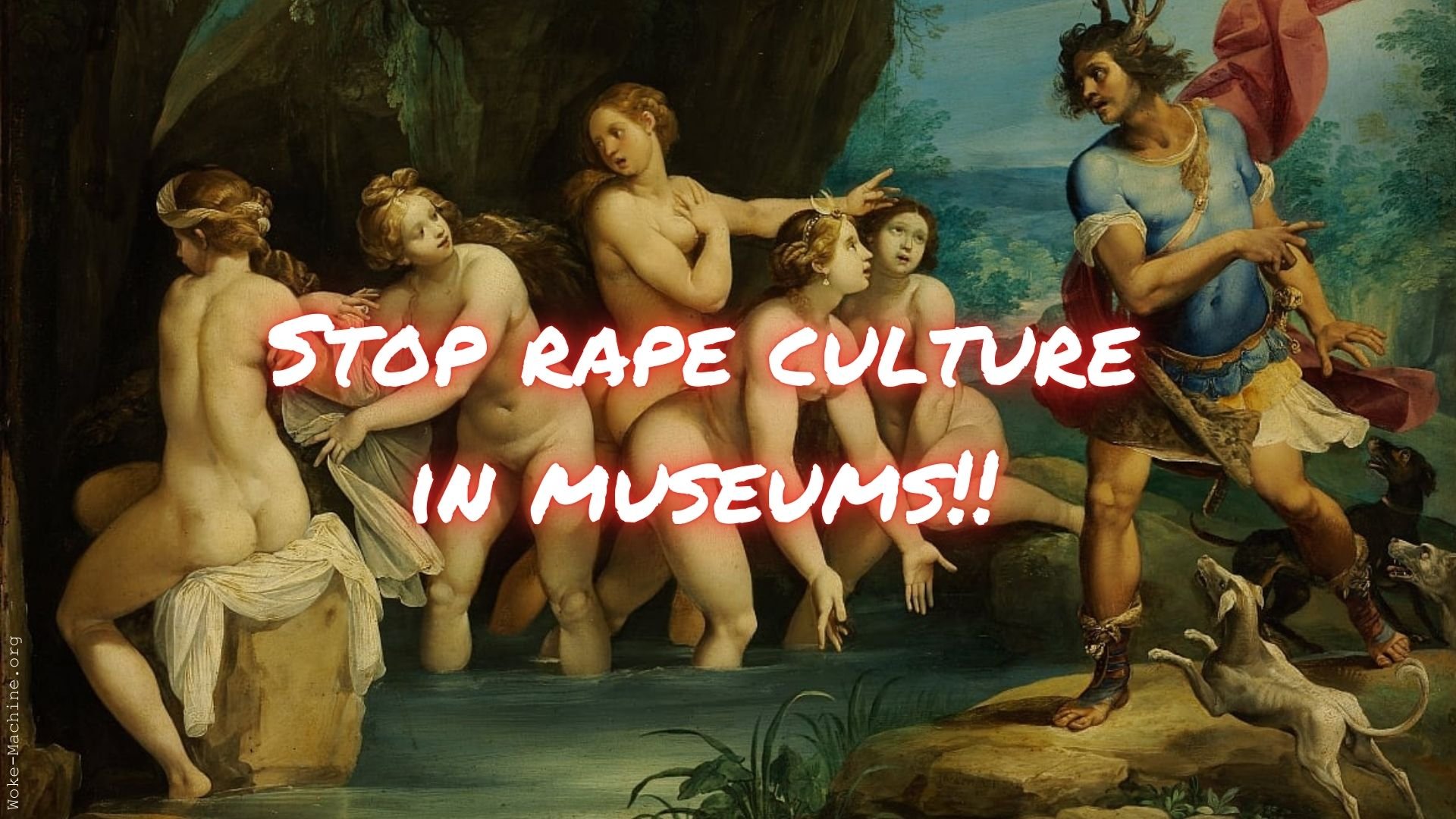
Stop rape culture in museums!!
Museums are overflowing with images that highlight a toxic masculinity, a shameful patriarchy: rape culture!
And yet, museum storerooms are teeming with invisibilized works.
We urgently need to re-establish a culture of benevolence, harmonious equity and generous inclusivity within these institutions.
Let's put away the toxic works and highlight those that open the way to a fairer world.
Tract_25EN| Woke-Machine.org | Download the tract_25EN
Scientific argument
Museums: temples of toxic masculinity or catalysts for change? In recent years, museums - the guardians of our heritage - have increasingly become the focus of heated debate. Long regarded as sanctuaries of art and history, we now understand - at last! - the extent to which they perpetuate sexist and violent representations, particularly through works that glorify toxic masculinity and patriarchy. Think, for example, of works by Titian, Poussin, Giuseppe Cesari... Let's take a look at historical or mythological scenes such as Diana and Actaeon, Leda and the Swan, the Abduction of the Sabine women... used as an alibi to spread rape culture.
A history inscribed in walls It's undeniable that many works of art displayed in museums around the world convey stereotypes that are deeply rooted in our society. Women are often depicted as objects, unattainable goddesses or submissive victims. As for men, they are frequently portrayed as virile, dominant and violent heroes. These representations have contributed to shaping our worldview and reinforcing inequalities between the sexes.
The weight of the past How can we explain the persistence of problematic representations in museums? Several factors come into play. Firstly, the history of art is intimately linked to the history of the societies that produced it. Works of art therefore reflect the values, beliefs and ideologies of their time. Secondly, museums have long been male-dominated institutions, which has encouraged the selection and valorization of works that conform to a masculine vision of the world. We are indeed faced with a systemic violence distilled in these high places of culture.
The urgent need to decolonize the way we look at things. Faced with these facts, we urgently need to rethink the role of museums and decolonize the way we look at works of art. This means questioning established aesthetic canons, diversifying collections and giving a voice to new voices. And why not tag, scarify and destroy these works, as we did with the statues. On the other hand, museum reserves are overflowing with invisibilized works, created by women, minorities or people from different cultures. These works offer a more nuanced and inclusive vision of art history. What are we waiting for?
Towards a culture of benevolence At the same time, it is essential to develop a new culture of benevolence within museums. This implies training cultural mediators in a decolonial and intersectional approach, encouraging dialogue with the public and creating spaces where everyone feels welcomed and respected, envisaging non-mixed spaces, “safe spaces” for cielleux who might be troubled. Museums must become places of exchange and reflection, where visitors can question works of art and assert their own interpretations.
A collective responsibility The fight against sexist and violent representations in museums is a collective responsibility. Artists, art historians, curators, politicians and the public all have a role to play. By putting away toxic works and valuing those that open the way to a fairer world, we can help transform museums into spaces of emancipation and social transformation.
Conclusion
Museums must be places of the future. By rethinking their programming and opening their doors to new voices, they can become catalysts for change and help build a more egalitarian and inclusive society. It's time to put away, if not destroy, toxic works of art, and give a chance to those that carry within them the seeds of a better world.
Download the Tract_en_25 A4 - PDF | X size JPG (600x1200)
This page has been translated by someone whose original language is not English. Please improve it by contacting us.
We apologise in advance if anything on this page offends you. If this is the case, please go here.
